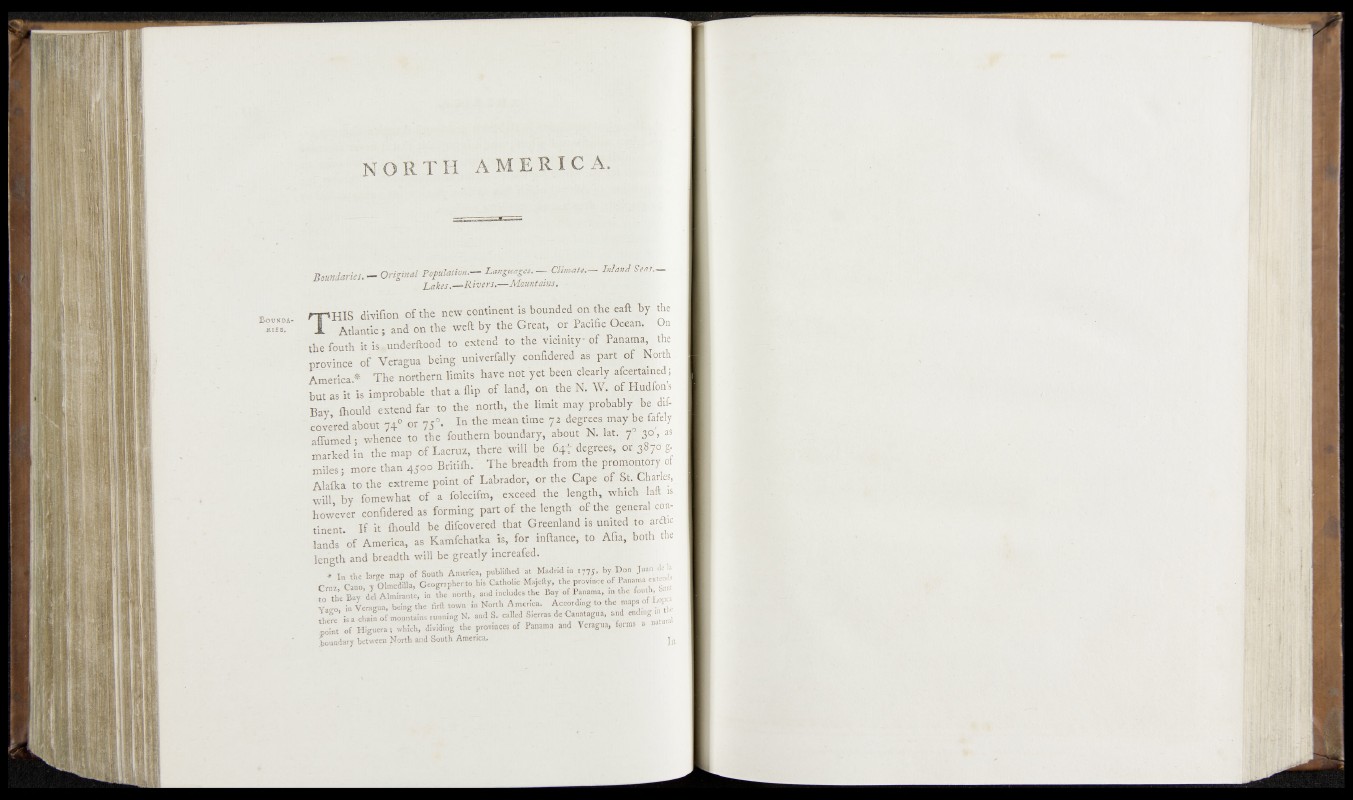
Boundaries. — Original-Populations-— Languages. — Climate.- t p l a A s ' . -
N Lakes.—’RnierX,—Mount atns. -
THIS divifion of the new continent Is bounded on.thgeaft j^ jjie
Atlantic; and on the -weft by the &jeat, E g Pa^fl^cean. |)n
the fouth k i^underftood to extend to t h e \ i c t a t ^ ^ f e ^ a , i f c
province of Veragua being univerfally confldered assart: M; North
America * The northern limits have M S M M W f !
but as it is improbable that a flip of land, on MM M B » J | |
Bay, fhould extend far to the north, the limit may'p^bably
■ Coveted abdnt-740 or 75°. In the H I
affumed- whence to the fouthern boundary,
marked in the map ofLacruz, thhre
miles- more than 4500 BritiQi. The breadth from the prpnto&ory ot
Alaika to the extreme point of Labrador, or the Cape M S |
will by fomewhat of a folecifm, exceed the length, which-laft f l
however confidered as forming part of the length; pfthe g^neralgn-
tinent If it fhould be difcovered that Greenland is united Jo « ?
-lands of America, as Kamchatka is, for inftance, to Afia, both the
length and breadth will be griatlymereafed.
* In the large map of South America, publilhed at M a d r i d |M | by Don M g ’ ;
Cruz, CaSo, y Olmedffla, Geographer to his Catholic Majefty, the province of : i #
fo th e S ty d llA lm ir a n tc , in the north, and includes the Bay,of Panama, M j j g § | | |
Yaao, in Veragua, being the town in North America. According to the maps of J f f i
there is a chain of mountains running N. and S. called Sierras de ■ Canatagua, and e? M ,
. b t o f Higuera f which, dividing the provinces o f Panama and Veragua, forms a | |
boundary between North and South America. J„